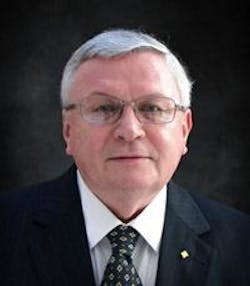Process Technology and Engineering Trends
Given all the activity that’s been occurring in the process industries over the past few years, largely due to the vast increase in the domestic oil and gas business, I wanted to gather some insight into what activities process automation suppliers are encountering the most. As part of this information-gathering process, I sat down with several Yokogawa executives at the ARC Forum to hear their perspective on the automation technology selection and deployment trends they’re seeing from their customer base.
The first clear trend identified focused on how users are opting to buy their technologies today. The automation industry separated from field device and systems about 20 years ago because users were buying these technologies separately, said Chester Mroz, president and CEO of Yokogawa North America. Mroz says he’s seeing more of a return to joint purchasing because users are again viewing field devices as part of the overall automation system, not separate from it.
A major difference today is that more of the decision-making responsibility around this (technology selection) is being given to main automation contractors (MACs), Mroz added, “especially for big capital projects.”
“Years ago users had lots of engineering resources,” said Brad Byrum, vice president of sales and marketing for Yokogawa North America. “Now they’re relying more on suppliers to provide those resources.”
Byrum adds that one of the drivers behind this change is that serious consideration of total cost of ownership is often not a factor for EPC (engineering, procurement and construction) firms. When it comes to automating their production operations, “users want an integrated solution,” he said. “And they want a MAC there to ensure lifecycle support.”
For more information on MACs, see this article on The Growing Role of Main Automation Contractors.
Today, users are more concerned about project execution than technology and equipment details, said Bruce Jensen, general manager of the Technical Solutions Support Center at Yokogawa. “Years ago, I spent my time comparing bits and bytes for customers,” he said. “Now they’re coming to us for project personnel.”
Coupled with this demand for more project-oriented help, Mroz said, “there is more intensity around software use in the automation business today to improve efficiency and plant performance. Users are looking for engineering tools that make execution easier.”
Mroz noted that this factor is behind many of the changes Yokogawa has been making to its Centum VP DCS. A new version of this software is planned for release in the fall of 2014. Some of the new features planned for the forthcoming release include:
• N-IO, a smart configurable, field located I/O subsystem compatible with existing I/O that reportedly eliminates the marshaling process;
• Virtual commissioning capability;
• Live instrumentation database;
• Capturing of process and field situation data for plant operations and management;
• Proactive maintenance for higher availability of plant assets;
• Total plant situational awareness;
• Support for environmental and sustainable initiatives;
• Real-time model adaptability to plant dynamics;
• Use of ISA 100 wireless extending to field device control with a specialized PID block featuring packet loss compensation; and
• Dynamic process simulator with improved prediction through field digital technology.
The improvements made to Centum VP are being done to help users handle tasks from design through commissioning with one tool, Mroz said. “This will be a benefit to EPCs as well,” he added.
About the Author
David Greenfield, editor in chief
Editor in Chief

Leaders relevant to this article:
